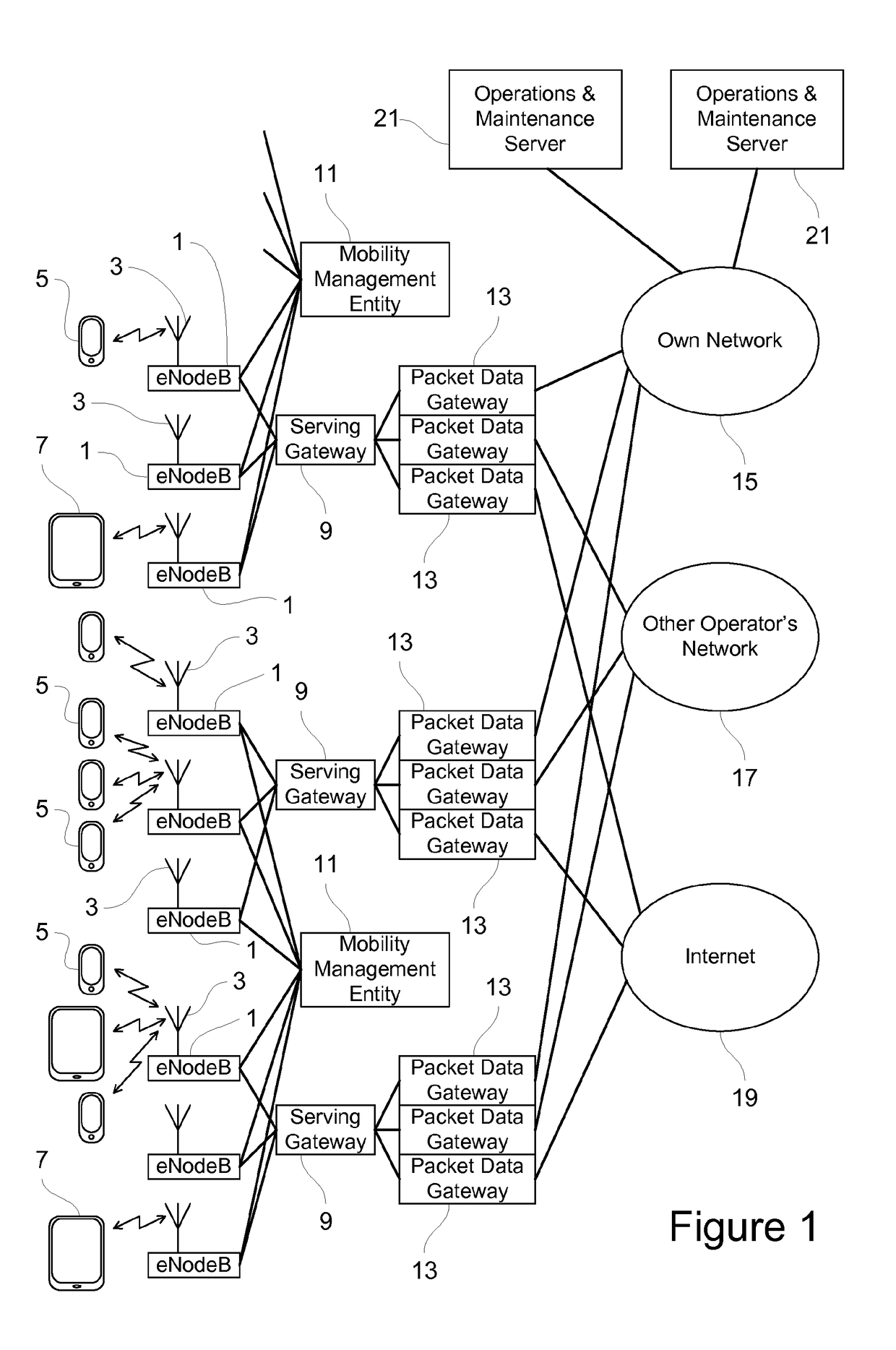Event management in telecommunications networks
a technology of telecommunications networks and event management, applied in the field of telecommunications network event management, can solve the problems of large number of event reports generated in telecommunications networks, insufficient routing of event reports solely, and large complexity of telecommunication networks, so as to reduce the likelihood
- Summary
- Abstract
- Description
- Claims
- Application Information
AI Technical Summary
Benefits of technology
Problems solved by technology
Method used
Image
Examples
Embodiment Construction
[0076]FIG. 1 is a simplified schematic diagram of part of a telecommunications network, as might be used for fourth generation (4G) cellular mobile telecommunications. As shown in FIG. 1, the network has a plurality of base stations 1 (possibly several thousand base stations in practice). Each base station 1 communicates via a radio antenna 3 with user equipment of an end user. Typically, the user equipment will be a cellular mobile telephone 5, such as a smartphone. Additionally, other kinds of user equipment may connect to the network via the base station 1, such as a notebook computer 7 having cellular telephony or Wi-Fi capability. The physical area within which user equipment such as a mobile phone 5 or a notebook computer 7 can make a radio connection to a particular antenna 3 will normally constitute a cell in the cellular telephone network. As shown in FIG. 1, multiple user equipment devices 5, 7 may connect with the same antenna 3 and communicate with the network in the sam...
PUM
 Login to View More
Login to View More Abstract
Description
Claims
Application Information
 Login to View More
Login to View More - R&D
- Intellectual Property
- Life Sciences
- Materials
- Tech Scout
- Unparalleled Data Quality
- Higher Quality Content
- 60% Fewer Hallucinations
Browse by: Latest US Patents, China's latest patents, Technical Efficacy Thesaurus, Application Domain, Technology Topic, Popular Technical Reports.
© 2025 PatSnap. All rights reserved.Legal|Privacy policy|Modern Slavery Act Transparency Statement|Sitemap|About US| Contact US: help@patsnap.com



